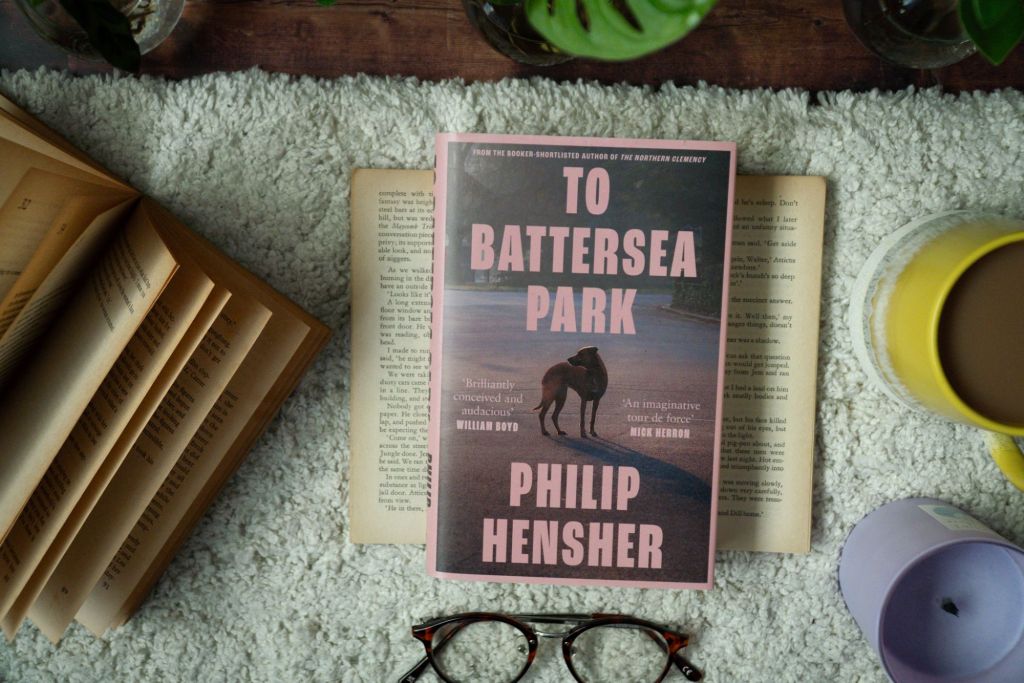
There was a point when I said that I would never read a pandemic novel. I didn’t think I wanted to relive those times again and didn’t see how a novelist would be able to convey the real feelings of that time. However, I’ve now finished my second pandemic novel. The first was The Fell by Sarah Moss which I adored. It’s one of those books that I forced people to read because it was so good. I just loved Sarah Moss’ writing so much. I was hopeful that Philip Hensher would offer another hit. It had certainly gained plenty of praise from critics. I decided to add it to my Pride TBR and started listening this week. Unfortunately, I’ve been feeling terrible all week, so I wasn’t as into it as I might normally have been. Still, I managed to finish it in time.
It’s been four years since the world stopped thanks to Covid. It’s not a long time when all is said and done. However, it feels both too soon and too late to publish a book about it. We’ve not moved on enough that the pandemic is a quaint part of our history, but enough time has passed that we all want to forget about the months we spent inside. By this point, a few novels have been set during the pandemic, so Philip Hensher needed to do something amazing to stand out. What he offers is a literary experiment that comes in four parts. On the one hand, it is a collection of novellas that tell us about life during lockdown. At the same time, it is a book that questions the writing process. How can you write stories about the pandemic when everyone was behind locked doors? Who knows how life was for everyone else when your scope was so limited?
The first part of the book is titled ‘The Iterative Mood’. It’s where Hensher describes the repetitive and endless feeling of the early days of the pandemic. It describes the mundanity that occurred and what we all did to entertain ourselves. Going out for our designated exercise and finding a way to drag it out. Looking through your curtains to see what your neighbours were up to. In this section, the narrator, a writer, describes scenarios that he imagines taking place across the road. It’s a fun idea. What does a writer do when he can only see glimpses of everyone? He writes stories about them. The point of this section is to keep the repetition going until you can’t bear to carry on. Honestly, I would have been quite happy for this to continue.
Section two is called ‘Free Indirect Style”, which splits the perspective between the writer, his mother, his father and a builder and his family. It shows the invisible connections that can cause problems in our lives. It’s enjoyable getting all of the snippets of people’s lives and working out how the pieces come together. It also gives a great insight into the human experience. We see the writer’s mother who is struggling with dementia, his father who is doing his best to care for her and an unhappily married couple making the best of their lockdown. It picks apart family dynamics as it shows the positives and negatives of your relatives. The relationships that were already teetering on the edge before the pandemic threw them into freefall.
The third section is called ‘The Hero Takes a Journey Away from His Environment’ and takes us into an imagined dystopian future. This piece of speculative fiction shows a world torn apart after Covid. Society has broken down, the government lost control and it’s every man for themselves. Quentin embarks on a journey from Whitstable to Ramsgate accompanied by his young neighbour at the behest of his mother. The 20-mile journey is full of drama and the relationship between Quentin and his travel partner is interesting. I enjoyed how this section evoked the genre and connected it to the virus. It was an original and fun way to write about the pandemic.
The final section takes us back to the writer and his husband. It describes the time they both caught COVID-19, which led to the writer’s hospitalisation. It’s interwoven with snapshots of the family across the road. The family are at risk from another illness that is harder to detect and treat. For me, this was the least enjoyable section of the book. After the previous section, it just felt a bit slow and repetitive. It might have felt different had this been released closer to the lockdown. The way he works to emulate the disorientation of fever and low oxygen levels is clever but it just felt like a literary experiment rather than engaging prose. This book is a literary experiment that asks “How can you write about the pandemic?” It’s a difficult balancing act and I liked Hensher’s approach. Each section has a different style that tries something new.
The only problem is that not all of it is as engaging as it should be. It didn’t help that the audiobook narrator was dreadfully dull. Whatever the reason, I didn’t connect to the book. The standout section is the third because it’s so original. It’s almost a shame that it doesn’t exist as a novella in its own right. The other sections are interesting and well-written, but they lack something. I wanted to enjoy this book more than I did. Not because it’s bad but just because it didn’t really offer any new insight into the pandemic.

One thought on “Book Review – To Battersea Park by Philip Hensher”